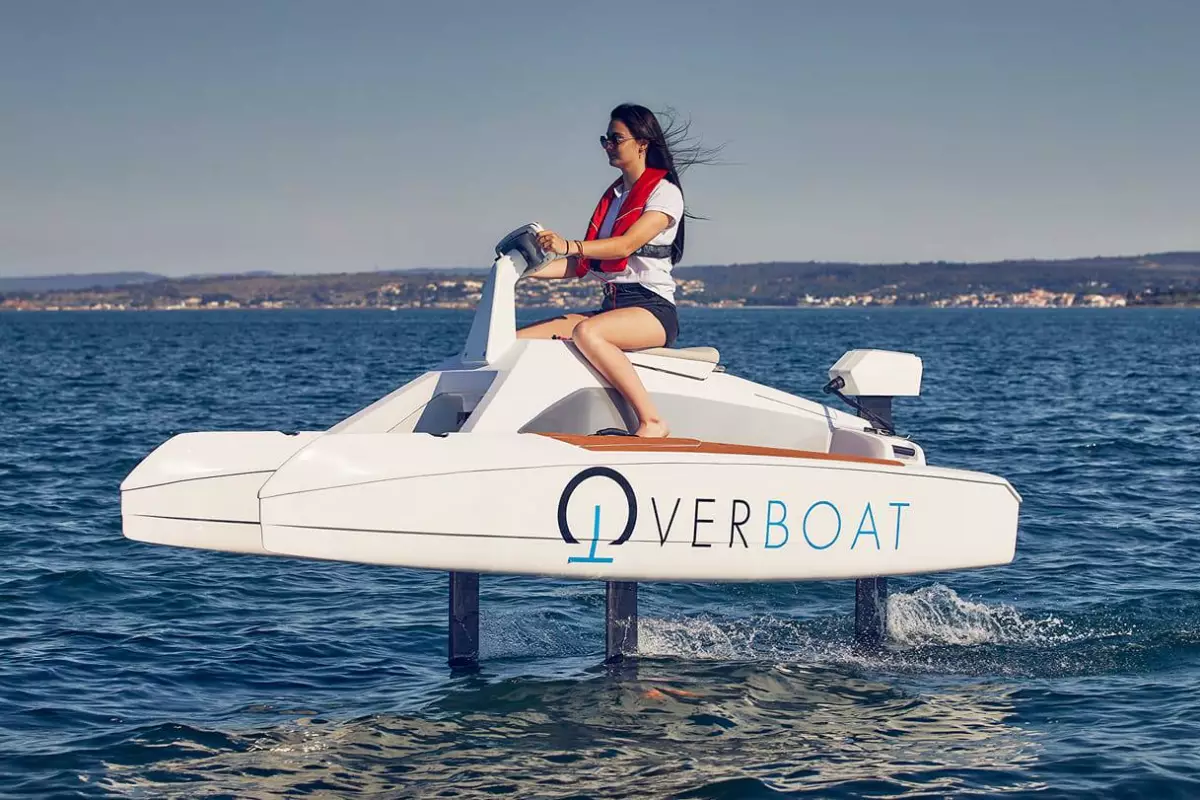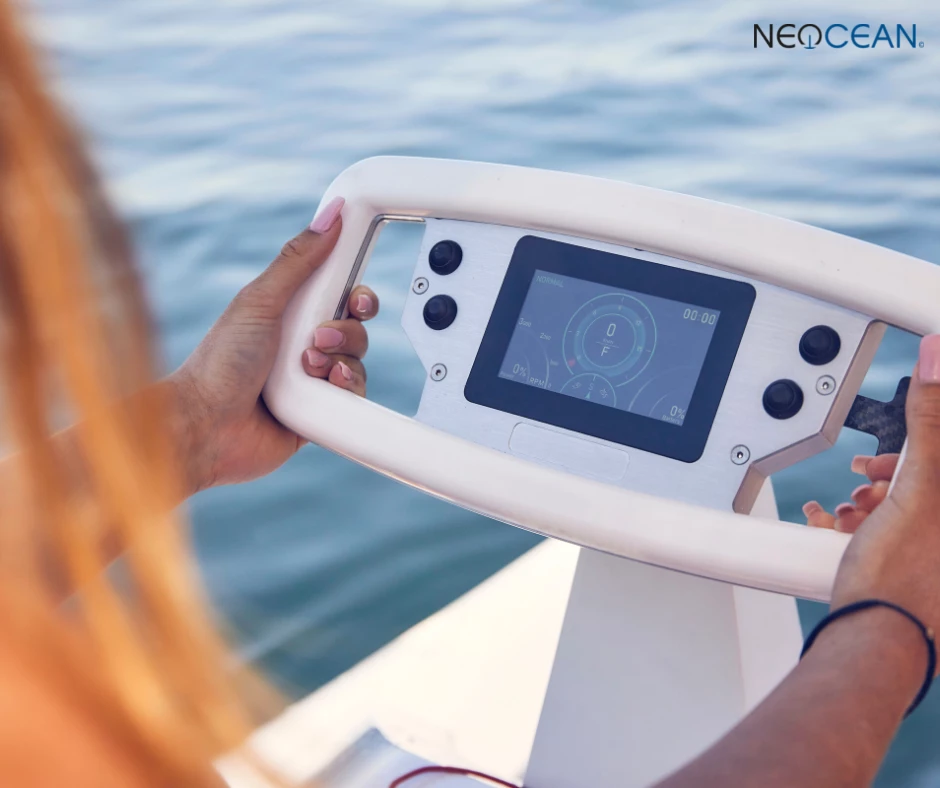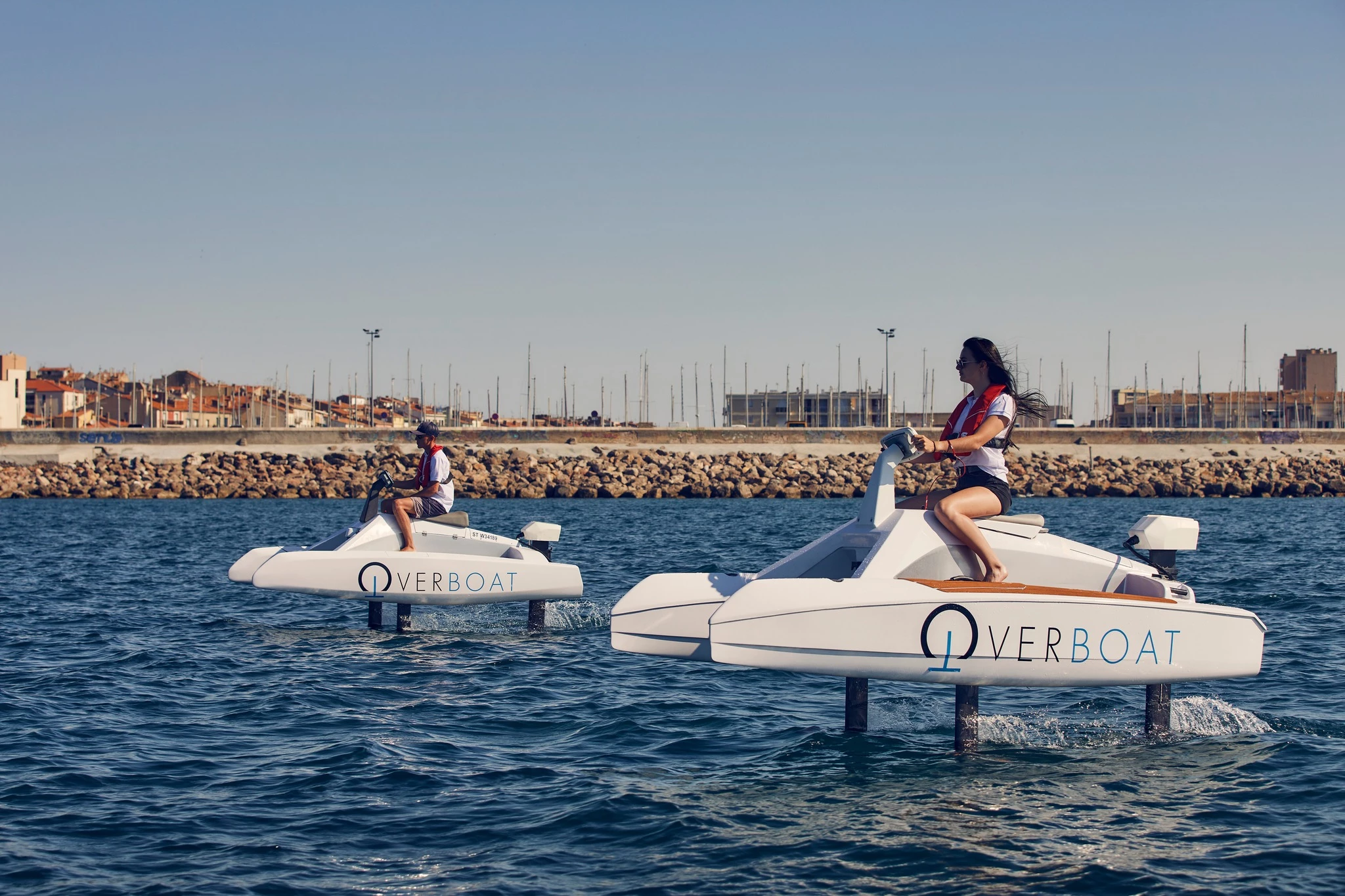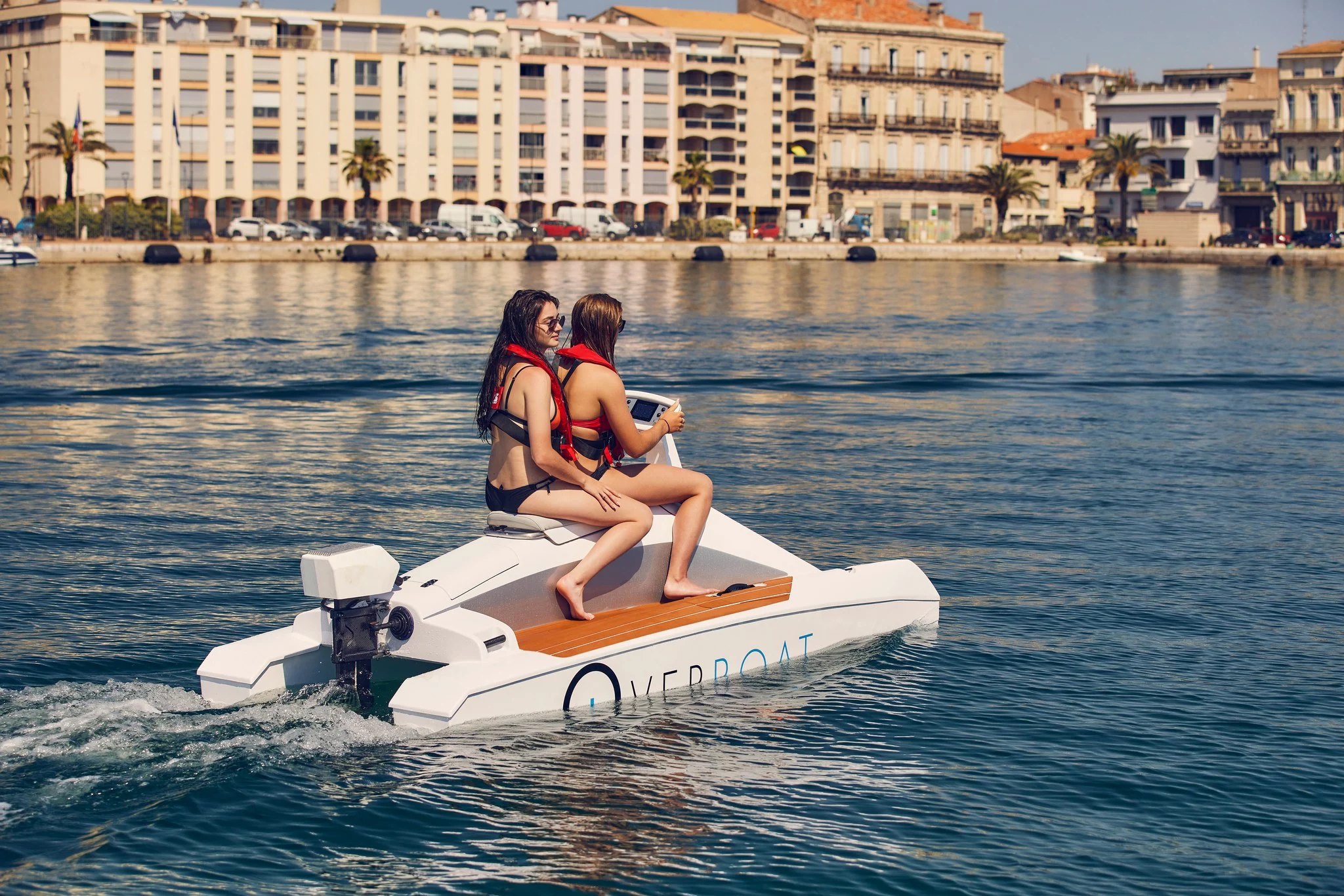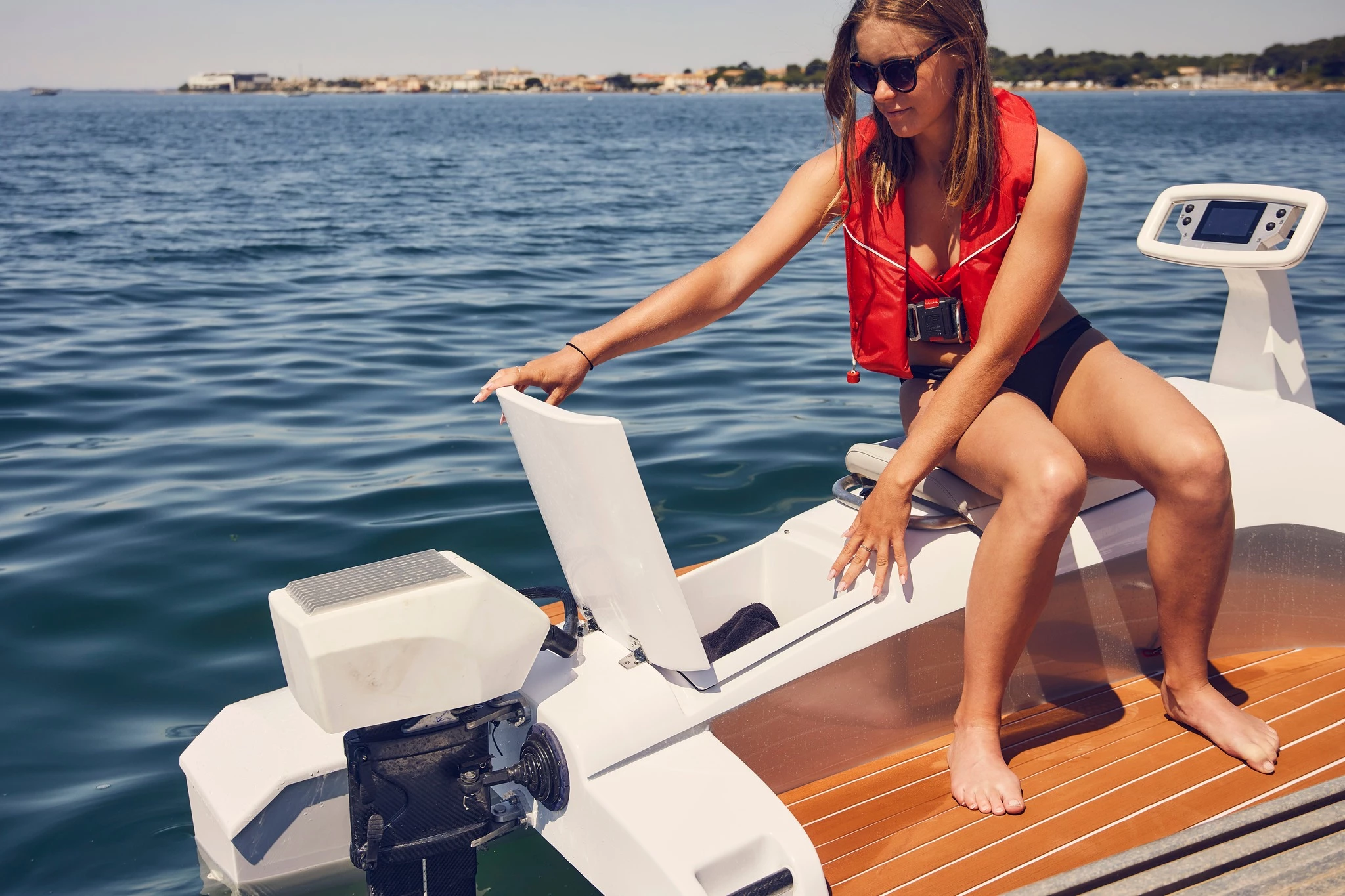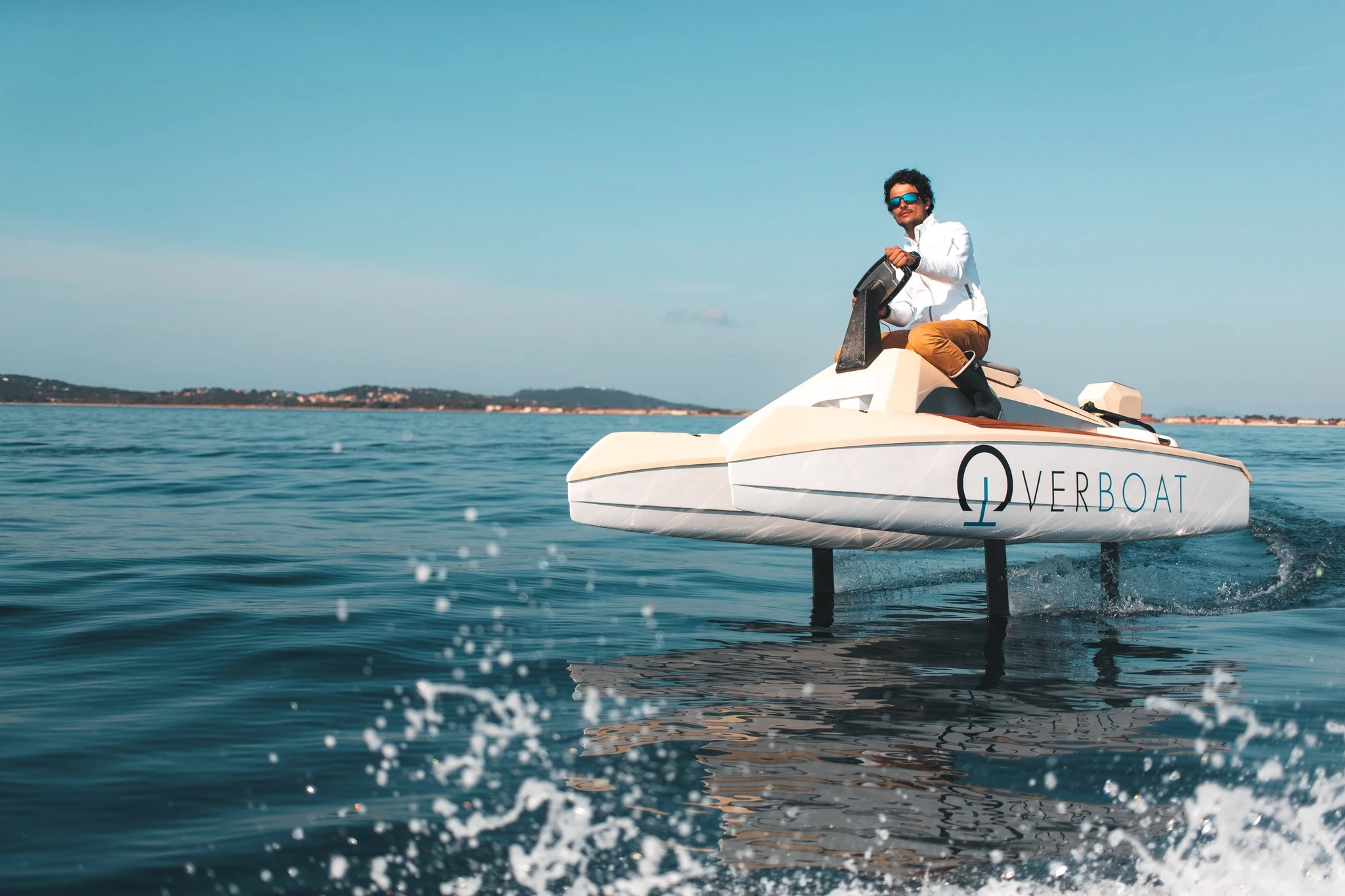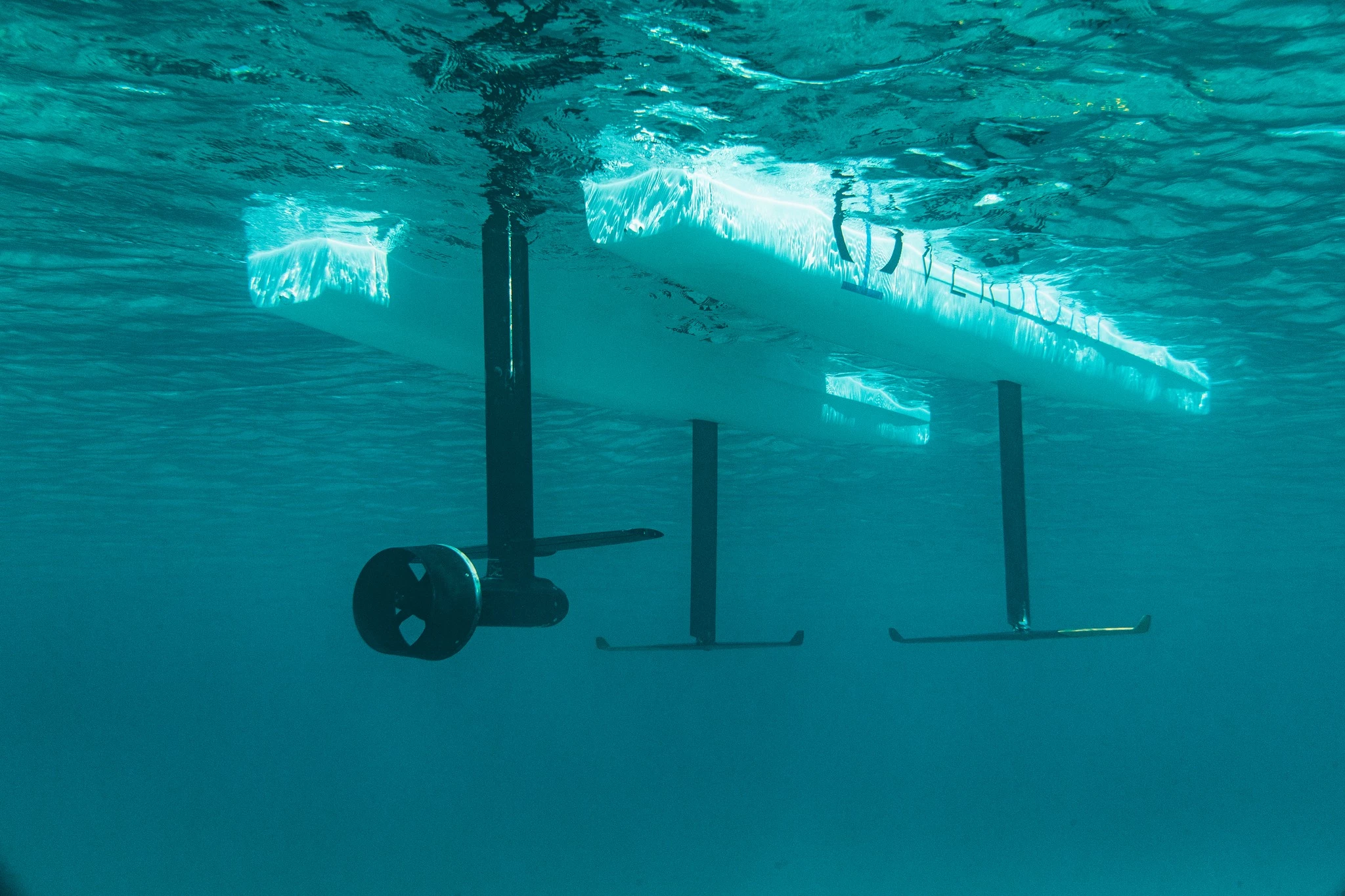Back in 2019, we took a look at the WaveFlyer, a public-private project billed as the world's first electric hydrofoil jet ski. Around that very same time, up on the other side of the equator, France's Neocean was developing its own e-hydrofoil PWC, a very different take from the Aussie-designed Waveflyer. The company's sit-atop Overboat starts its ride as a stable catamaran before lifting one or two passengers overtop the water to hit speeds up to 20 knots, or on-water runtimes up to two hours.
Hydrofoils and electric drives seem like a natural pair-up for clean, quiet watercraft, a combination we've seen growing increasingly on everything from e-surfboards, to powerboats, to passenger ferries. As battery density increases, we suspect we'll see the combo implemented into larger and larger vessels, too. The hydrofoils allow for more efficient, low-drag cruising to help get the most runtime and speed out of humble battery-powered propulsion system.
Neocean's Overboat F series lineup slides in somewhere between the WaveFlyer and the more enclosed two-person Quadrofoil. With a range-leading top speed of 20 knots (23 mph or 37 km/h), the two-seat Overboat 150F is a natural place to start when digging into Neocean's four-model lineup. As with all Overboat models, the 3.6-m (12-ft) 150F features a catamaran layout of dual poly-fiberglass hulls connected by a raised central seating area. The top of each hull is designed like a mini-deck of its own with marine flooring that serves as stable step up to the seat, a footrest while riding and, as shown in photos, even a swimming platform.
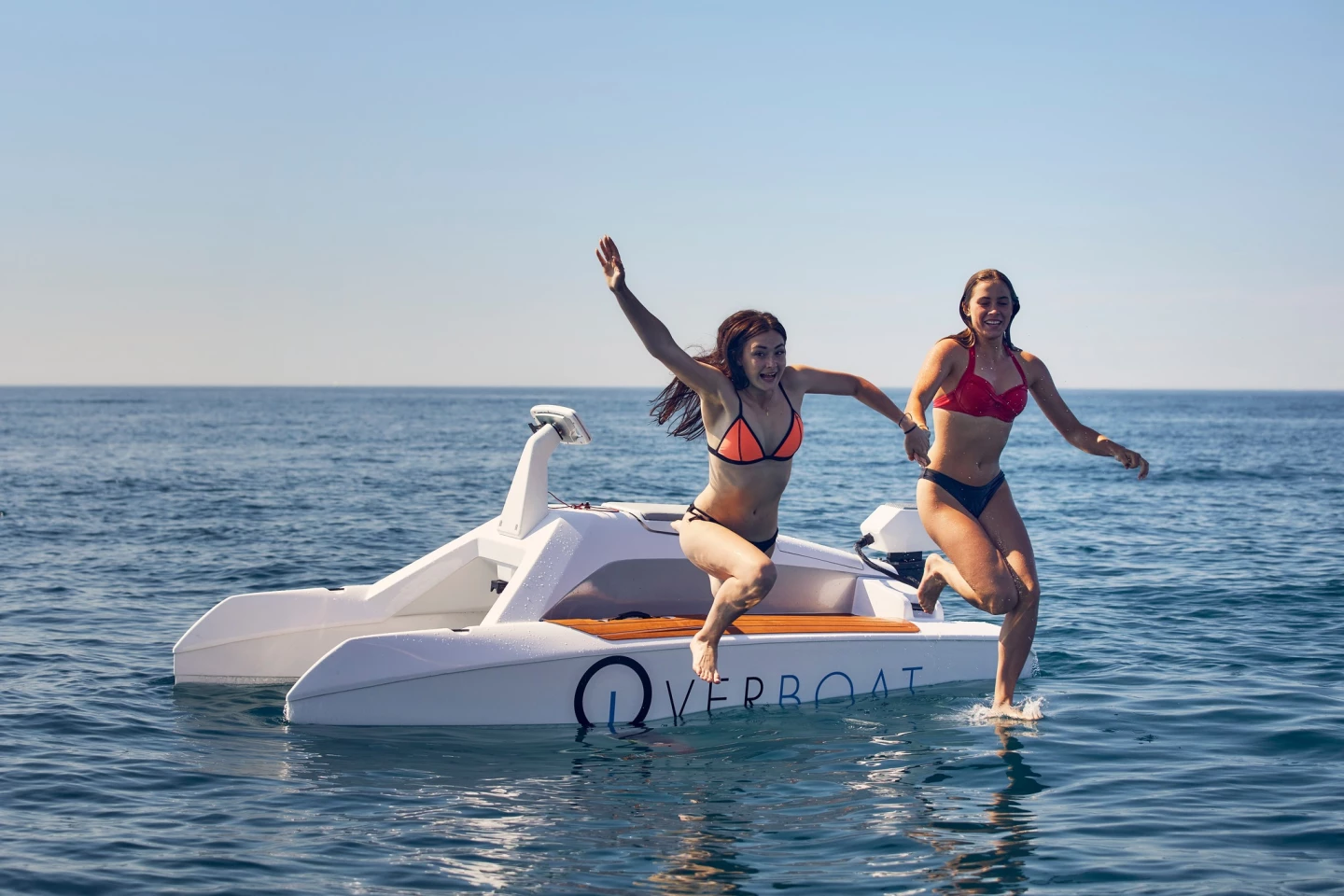
The Overboat 150F's 10-kW electric propeller drive is located near the base of the retractable rear foil. That rear foil is joined by two retractable front foils, all of which feature an inverted T design. The three foils deploy automatically once the driver throttles up to 10 knots (12 mph or 19 km/h), raising the vessel up for smother, faster performance and stability in choppy water.
The 20-knot top speed is only about half the 40-knot+ speed one might enjoy on a traditional gas jet ski, but the payoff comes in quiet, zero-emissions operation that opens usage up to restricted waters that allow only electric vessels. Besides, it's really more of a cruiser, anyway, with a 10-kWh battery pack delivering roughly two hours of water time when taking things more slowly.
The battery charges in about 1 hour and 45 minutes, so as long as there's a hookup nearby and you don't mind spending a little time on the sand or at the marina, it'll be good for a couple of rides a day.

In addition to the two-person 150F, Neocean offers the single-person Overboat 100F, which tops out at 15 knots (17 mph or 28 km/h) and has the same two-hour runtime. The 4.5-kW e-drive is powered by a smaller 5.7-kWh battery pack.
The Overboat F series includes a smart control system that adjusts the incidence of the hydrofoils 100 times a second to ensure smooth, stable flight. The vessels can also be operated as unmanned drones – for surveillance and other professional uses more so than recreation – which you can see in the split unmanned/manned video clip below.
Those who prefer to stay on top of the water rather than above it also have one- and two-seat Neocean options. The Overboat C range eliminates the hydrofoils and navigates as electric mini-cats with a modest top speed of 12 knots (14 mph or 22 km/h) and runtimes between two and three hours.
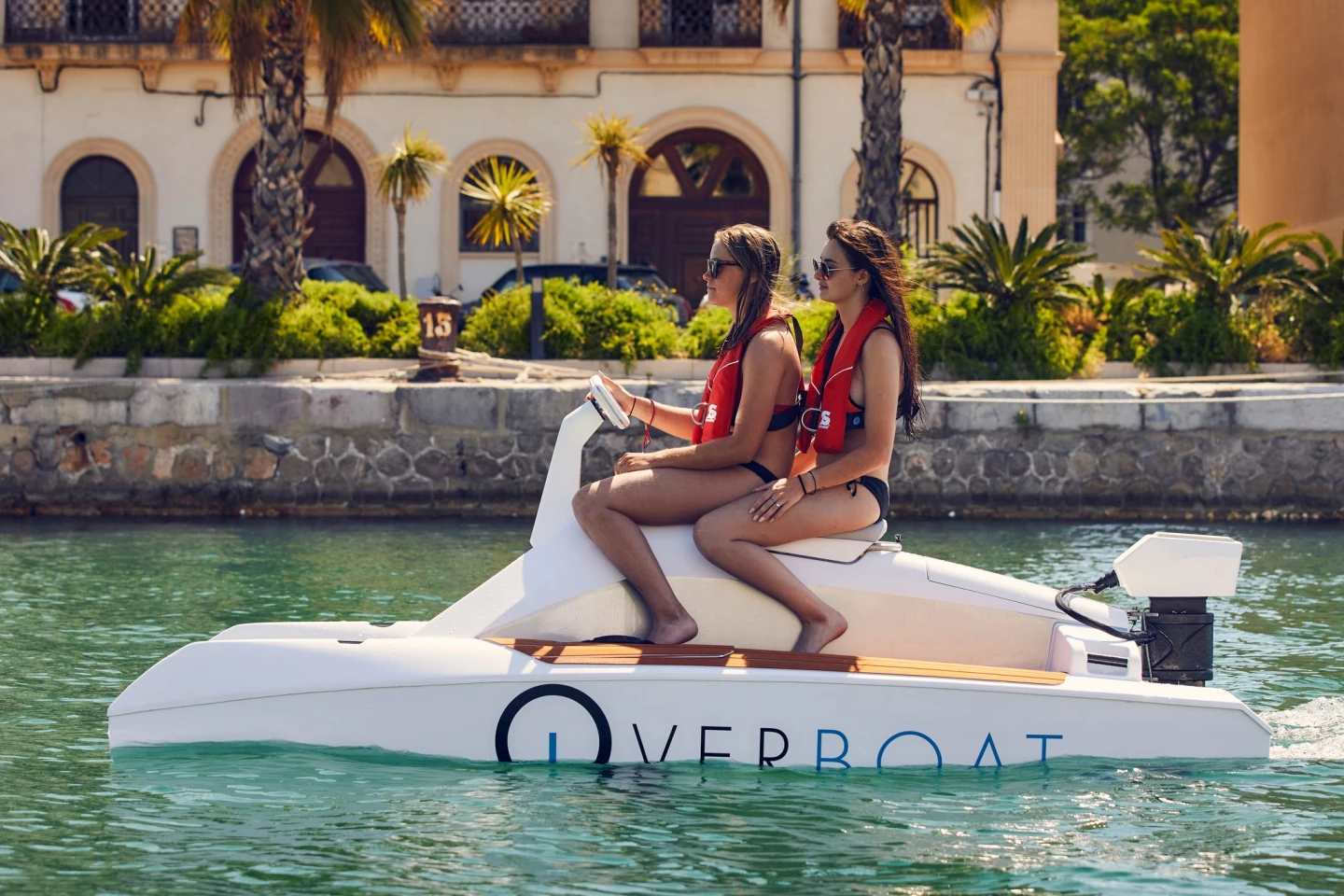
An interesting advantage of the single-person 100F and C models is that they offer a swappable battery option with three 22-lb (10-kg) packs that can be switched out for fresh ones in a matter of minutes. So riders could theoretically keep riding all day, though they'd need to stop every couple hours for fresh batteries.
Neocean showcased the Overboat series earlier this month as part of the Innovation Village at the 2022 Cannes Yachting Festival. The lineup runs between €14,158 (approx. US$14,125) for the 100C catamaran (non-foil) to €34,992 ($34,900) for the 150F two-person foiling cat. Options include a trailer, launching trolley and carbon fiber hull upgrade.
Source: Neocean
